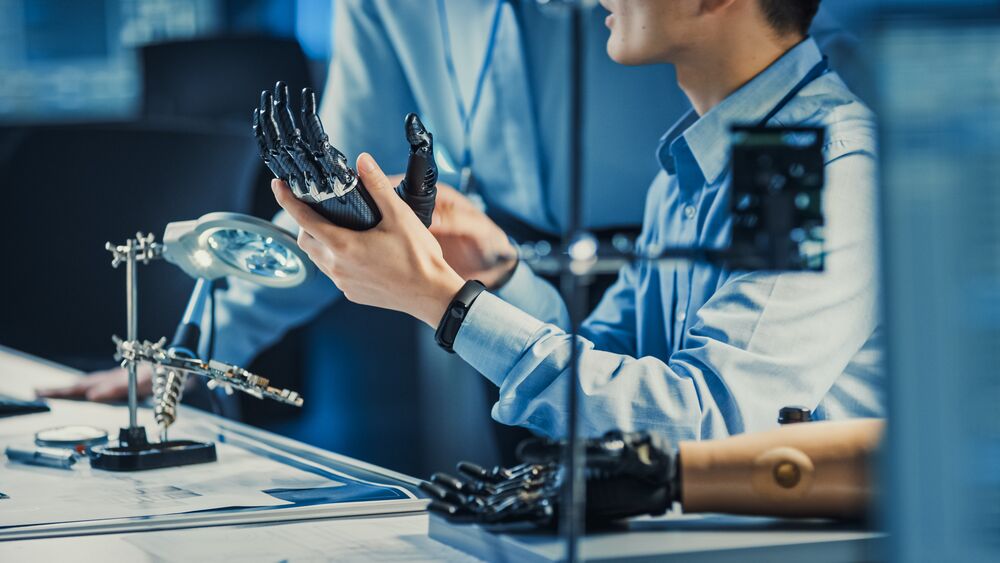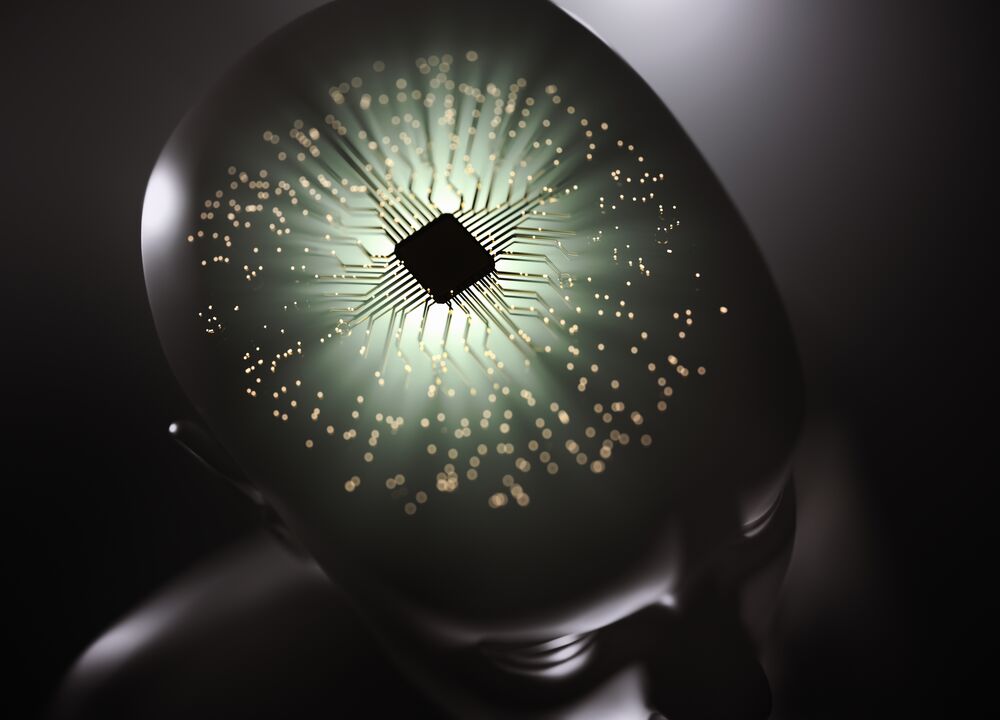The Evolution of Medical Wearables

Image Source: sitthiphong/Stock.adobe.com
By Jon Gabay for Mouser Electronics
Published December 28, 2022
When we think of wearable technology, our minds tend to race toward watch-type devices. However, there are many other technological devices that fit the “wearable bill.”
In the past, technology was used to protect people, enhance sensory abilities, and overcome shortcomings. Newly-introduced devices are expanding the scope of human enhancements, health, and wellness. The most recent flurry of wearable technologies involves health maintenance and information access; as for the future, we will be moving beyond mere medical monitoring and toward human augmentation.
Let’s explore by taking a brief walk through the early days of wearables.
Earliest Wearables
While many of today’s wearables aim for style and comfort in the form of watches, rings, pendants, wristbands, and implants, earlier iterations (really, really old) have not placed comfort and convenience as the primary factor in technology that humans wear. Many years ago, a soldier’s helmet was considered a high technology device that for the first time let soldiers survive head blows that would otherwise incapacitate an unprotected soldier. Even eyeglasses were once the wearables of the times, improving the ability to learn and contribute to society.
While armor and eyeglasses can be thought of as passive wearable technology, mechanized wearables also advanced society. Mechanized wearable technology arose in the 1600s with the birth of the pocket watch, providing industry and ordinary humans easy and accurate access to time measurement. This access is still important for scheduling and manufacturing. Processes could be refined more accurately for anything from smelting metals to baking bread. The wristwatch did the same for even more people, but modern technology has built on these advancements and taken wearable technologies to new levels.
Let’s see how far we’ve come.
Today’s Wearables
Unlike static armor or mechanized technology, today’s wearables are electronic. Because of the widespread and low-cost manufacturing of devices like microprocessors and sensors, more and more of the population now have relatively low-cost and easy access to these devices' benefits.
Many of these wearable devices are used for health and fitness. However, others can provide seamless access to information technology and communications. Both uses are actively marketed, and the once-mechanized wristwatches have been made more aesthetically appealing via modern displays and touchscreens.
Watches made famous by leading electronics manufacturers provide easy-to-read and customizable displays of time, date, calendar alerts, and message alerts, along with audio and video. As technology improves, wearable devices will significantly affect how we interact with machines. But, to most, health is still the driving factor.
Health and Fitness Monitoring
Accelerometer advances are primarily driving health and fitness monitoring devices. Step counters use accelerometers to track steps. They’re also implemented in watches, bands, pendants, rings, and all other wearables we can think of today.
While rings have traditionally not offered as much functionality as watches and bands, wireless communications allow them to monitor the perfusion index (how well blood circulates), heart rate, heart rate variability, sleep times and levels, blood oxygen levels, and even stress (Figure 1). With an integrated accelerometer, they can also be used as step counters.

Figure 1: While watches and wristbands are mostly used for wearable technologies, rings are becoming more popular, especially as display technology makes their information more accessible. (Image Source: P.S/stock.adobe.com)
While a good indication of motion, step counters are not accurate regarding exercise intensity and calories burned. A step counter will count steps but will not differentiate walking or jogging on a flat surface as opposed to stairs, hills, and inclines. When combined with GPS technology this accuracy issue could be overcome, but modern-day GPS is still not accurate enough to detect altitude with any degree of certainty.
Smartwatches and fit bands are the most widely used. Fit bands have no or limited displays, count steps, track calories, measure sleep patterns, and measure heart rate, blood pressure, and skin resistance (sweat, stress, and exertion levels). But there are also some sleep benefits to these wearables.
Sleep patterns are the most important monitoring function for many people, especially those with sleep apnea. Links to heart conditions and decreased health have been attributed to sleep apnea, and for the first time, people can monitor and track sleep patterns without the costly and inconvenient sleep study facilities. Sleep monitoring can also be critical for young babies since a wearable wrist device can detect if a baby stops breathing. Sudden Infant Death Syndrome (SIDS) can be eliminated with the use of this technology.
Another useful application of accelerometer-based fitness trackers is to measure when and if someone has fallen. This is particularly important with the elderly and with an aging population. While the older wireless buttons that can be activated after a fall have saved many lives, if someone is unconscious, these will not alert anyone. However, the wireless communications between watches, pendants, rings, and even pocket wearable devices can alert emergency contacts when a fall occurs. The same technology can be used to detect if someone is in a car crash.
Related to this is the ability to track wandering patients with Alzheimer's or other forms of dementia. Logging movement within a building like an assisted living facility can alert staff when someone who is mentally impaired is in a location they should not be at, at least unsupervised. This can be even more important when a mentally impaired person wanders into a stairwell that is not traversed as often as other corridors or passages.
While more expensive than the $20 to $100 wearable devices, more sophisticated medical devices are also positioned to help save and extend lives. Instead of just monitoring heart rate, wearable medical devices have been used to detect and log cardiac events. These cardiac events don't typically happen in a doctor's office and are often missed and not diagnosed because accurate EKG waveforms are unavailable. Now they are. With wireless access to global networks, remote doctors, or even cloud-based services, these devises can upload data periodically or even in real-time to alert that an incident is happening.
Patches can be considered wearable medical technology, too. While for the most part, patches just dispense medications at a pre-determined rate, active electronics embedded into patches monitor physiological conditions through the skin to control the introduction of medications like pain relief.
Wearable electrostimulation technology has also been used for years. Here, 'peel and stick' disposable electrodes can attach around muscles and painful areas. Little periodic electric surface shocks can override deeper internal pain mechanisms and provide relief.
The next big wave will be implanted sensors. Combined with smart patches, wearable watches, rings, pendants, and wristbands, implanted technology can more accurately dispense medication as needed. Implanted sensors can communicate with active patches that dispense precise amounts of medication on command. What's more, it is much easier to replace a patch than to refill an implanted insulin pump, for example.
Subdural and Implantable Wearable Technology
Most people consider medical implants a more futuristic technology, but medically implantable devices have been around for decades. The first pacemaker was implanted in 1958, and since then, the technology has steadily improved, including defibrillators that can restart the heart.
As with wearable sensors, implanted sensors have steadily increased in popularity. Modern-day implantable sensor technology can monitor blood sugar levels, tissue and bone regeneration, hypertension, arrhythmias, nerve stimulation (like cochlear implants and intraocular lenses), and even dispense insulin, intrauterine contraceptives, and other medications as needed.
While devices like insulin pumps and pacemakers are surgically inserted, new technology makes injectable medical implantable devices possible. These injectable sensors can communicate wirelessly outside the body. A technology called Quantum Dots can even store personal medical information.
A big market for these injectable sensors is in monitoring prosthetic devices to improve functional myoelectric control. Motor neuro-prosthetics are expected to increase as knee, hip, and other replacement joints become more widespread (Figure 2). Feedback sensors detect joint angles, skin contact pressures, and tissue strain. Multipoint topologies are becoming the dominant technology for this as wired star topologies are phasing out. This delves into bionics, which can enhance normal human strength and reflexes.

Figure 2: Implanted sensors can aid in the use of prosthetic limbs for both control and sensory feedback. (Image Source: Gorodenkoff/stock.adobe.com)
Implanted hormonal and brain chemistry sensors are also emerging to help those with mental conditions remain medicated. It's possible for those who stop taking their medications to become more agitated and violent. Automated medication dispensing reduces the number of mentally unstable people.
Implants are also being used for non-medical applications. For example, people have been implanting RFID technologies under their skin. The RFID technology, like generation II, can operate entirely from RF energy supplied by an external reader, allowing nonvolatile storage of information that could be used as medical alerts. Or even to unlock their cars and houses.
Brain Implants Overcome Shortcomings
Brain implants, also called neural implants, connect directly to brain and other nerve cells and can be used for various applications (Figure 3). Some of these are beneficial, like alleviating the conditions of Parkinson's disease or Vagus nerve stimulation to help control digestion and heart rate.

Figure 3: Brain implants have already been performed and can monitor neural firing, stimulate nerves, and provide sensory information directly to the brain. (Source: ktsdesign/stock.adobe.com)
Several of these types of medical implants have helped countless numbers of hearing or vision-impaired people. There have even been cases where integrated circuit technology has been successfully implanted to allow those who are otherwise color-blind to see and differentiate colors.
The range of human sensory organs can also be extended using these types of implants. For example, extending the field of vision into the infrared and ultraviolet spectrums is now possible. Hearing implants can also extend the hearing range and apply specific filters that allow implanted people to hear things ordinary people cannot hear. This can be done using wearable hearing aids as well.
More recently, more sophisticated implants have demonstrated the ability to use computers and compose text from brainwave decoding. These technologies can be life changers as motorized artificial limbs and joints can be controlled using thought patterns, allowing amputees to live more traditional, unassisted lives.
And, with the advent of implantable AI processors that can learn complex brain firing patterns, it is possible to communicate with prosthetic and bionic limbs by thinking of shapes and colors. Visualizing a yellow triangle, for example, can command a prosthetic arm to move.
Conclusions
In under 60 years, we have gone from large, surgically-inserted technology to subdural and injectable technology for medical monitoring and administration. Not only have these innovations saved and extended lives, but they have also improved quality of life and made caretakers and medical practitioners able to care for more people at reduced costs.
The reduced size of integrated circuits, coupled with lower-power semiconductor technologies, has permitted more sophisticated and safe technologies to be worn and implanted. While we did not discuss clothing as wearable technology, clothes can also benefit the population, but these come with other challenges like surviving washing and drying.
Looking forward, expect to see more active wearable and injectable devices. Smart patches will simplify the automated dispensing of medications, especially when coupled with implanted sensors. As chemical sensors advance, overcoming mental disabilities may even help curb the violent tendencies of those who commit violent actions. Combine this with RFID to identify and verify, maybe we can curb identity theft, too. We talk a lot about the medical benefits of wearables, but once we become part of the machine, the possibilities are limitless.